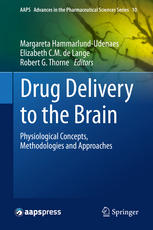

Most ebook files are in PDF format, so you can easily read them using various software such as Foxit Reader or directly on the Google Chrome browser.
Some ebook files are released by publishers in other formats such as .awz, .mobi, .epub, .fb2, etc. You may need to install specific software to read these formats on mobile/PC, such as Calibre.
Please read the tutorial at this link: https://ebookbell.com/faq
We offer FREE conversion to the popular formats you request; however, this may take some time. Therefore, right after payment, please email us, and we will try to provide the service as quickly as possible.
For some exceptional file formats or broken links (if any), please refrain from opening any disputes. Instead, email us first, and we will try to assist within a maximum of 6 hours.
EbookBell Team

4.3
58 reviewsThe development of new CNS drugs is notoriously difficult. Drugs must reach CNS target sites for action and these sites are protected by a number of barriers, the most important being the blood –brain barrier (BBB). Many factors are therefore critical to consider for CNS drug delivery, e.g. active/passive transport across the BBB, intra-brain distribution, and central/systemic pharmacokinetics, to name a few. Neurological disease and trauma conditions add further complexity because CNS barriers, drug distribution and pharmacokinetics are dynamic and often changed by disease/trauma. Knowledge of all these factors and their interplay in different conditions is of utmost importance for proper CNS drug development and disease treatment. In recent years much information has become available for a better understanding of the many factors important for CNS drug delivery and how they interact to affect drug action. This book describes small and large drug delivery to the brain with an emphasis on the physiology of the BBB and the principles and concepts for drug delivery across the BBB and distribution within the brain. It contains methods descriptions for studying drug delivery, routes and approaches of administering drugs into the brain, the influence of disease, and drug industry perspectives. Therewith, it contributes to an in-depth understanding of the interplay between brain (patho)-physiology and drug characteristics. Furthermore, the content is designed to be both cutting-edge and educational, so that the book can be used in high-level training of academic and industry scientists with full references to original publications.